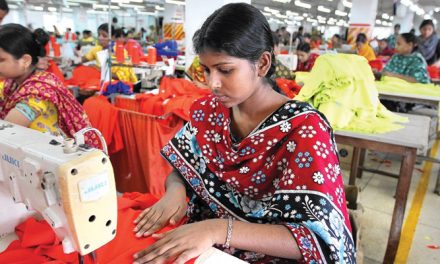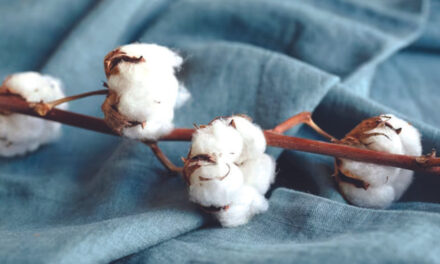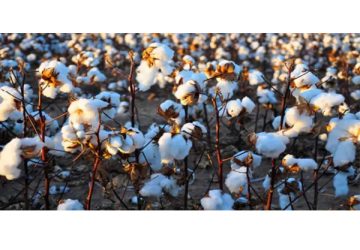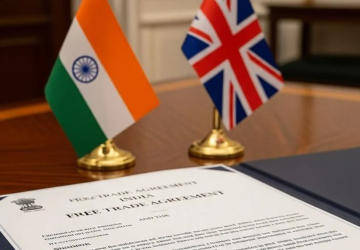India’s textile and apparel exports may come under severe strain in the coming years due to cotton shortage exacerbated by the imposition of import duty on the fibre which has become expensive by about 15 percent. The industry is likely to lose export orders. Over two thirds of cotton production is converted into value added products that generate direct employment to over 11 lakh people and earns around dollar 25 bn in foreign exchange.
The latest data show that exports have posted a 8.30 percent increase in April 2024 to January 2025. The industry has high potential to bridge the gap in the trade deficit if adequate volume of quality cotton is made available at internationally competitive prices throughout the year.
The data show that apparel exports clocked an 11.56 percent increase while textiles and apparel together posted 1 8.30 percent rise compared to the same period in 2023. Cumulative exports of textiles apparel registered a 13.88 percent growth in January 2025 over January 2024. During April 2024 – January 2025, textile exports showed a 5.96 percent increase the same period last year.
Exports of cotton yarn / Fabrics / Made-ups rose 4.10 percent during April – January 2024 to April – January 2025. Man-made yarn / Fabrics / made-ups posted a 5.99 percent increase during the period under review. Textiles and apparel exports constituted 8.36 percent of the country’s total exports compared to 7.82 percent during this period.
Looking at the ambitious target of reaching dollar 350 bn total textile business size from the current level of dollar 162 bn including the vision to increase export from dollar 35bn to dollar 100 bn by 2030, the industry leaders have appealed to the Union Government to grant import duty exemption on cotton during the lean cotton season i.e. April to October. Farmers sell around 90 percent of cotton during November – March and the exemption will not affect farmers.
According to industry leaders, the industry is likely to face a grove crisis from 2025 onward due to cotton shortage estimated crop size of 299 lakh bales against the consumption of 326 lakh bales. Spinning mills, the bulk of which are in the MSME sector will find it tough to import cotton with the present duty in to bridge the demand supply gap. The MSME units could buy and stitch cotton only for 3 months due to working capital constraint. They import during the off season– April to October.
The Government had given such an exemption in April to October 2022 which had greatly benefited the industry to source cotton at internationally competitive prices and sustain its competitiveness. Around 80 percent out of total cotton production is of good quality and remaining cannot be used to produce high value added textile products. Again, around 30-40 lakh bales of cotton is normally exported and the industry would face a shortage it the import duty exemption is not given. All the competing countries such as China and Pakistan that cultivate cotton allow duty free import of the fibre during the off-season to have a win-win strategy both for the farmers and the industry.
What is also affecting the export performance is that trade adopts import parity pricing which makes domestic cotton price expensive by 7 to 10 percent. Even Australian Shippers charge 4 to 5 percent premium on three lakh bales of duty free cotton imports under the Free Trade Agreement (FTA) with that country.
The benefits of duty-free import under the Advance Authorization Scheme of the current Exim policy cannot be availed of by around 80 percent of exporters in the powerloom, handloom, knitting processing and garmenting sectors for cotton import. The same is the case in regard to yarn suppliers to corporates under nominated business.
Industry sources say that in the absence of appropriate cotton seed technology and agronomy practices in the last 12 years has pulled down the annual cotton production from 398 lakh bales to 299 lakh bales and the industry will be left with the lowest closing stock of 27 lakh bales in history, according to estimates of the Committee on Cotton Production and Consumption (COCPC). India was a net exporter of cotton and was producing 360 lakh bales against the requirement of 310-320 lakh bales of cotton when the duty was imposed.
Industry leaders have also said that though the increased cotton production as a result of the duty hike has benefited the farmers to some extent, it has hugely benefited the traders and MNCs. The price increase has completely eroded the competitiveness of Indian cotton textile value chain which exports almost two thirds of cotton produced in the country as value added products as stated earlier.
Realising the pivotal role by the industry in the country’s economic development the budget for 2025 26 has made a few important initiatives specific to textiles which would benefit the industry. These measures would enhance the industry’s competitiveness.
Southern India Mills Association says the announcement of Rs.600 crore to improve productivity and sustainability of cotton, promote the extra-long staple (ELS) cotton variety and best of science and technology to ferment on a mission made approach giving a thrust to high yielding goods is a step in the right direction.
India was producing around 25 lakh bales of ELS cotton in the 1980s when the crop was remunerative to the farmers. Currently, the production is around 5 Lakh bales and has the potential to consume 10 lakh bales. The industry imports around 12 lakh bales ELS cotton having 32.5 mm and above and textile business size a year providing direct jobs to 12 lakh people. The value addition in the ELS cotton textile product is 10 times and has huge potential to boost exports of the home grown ELS cotton is made available.
SIMA noted that the ministries of agriculture and textiles have already been operating or a special project on cotton covering 15,000 hectares of land in all the leading cotton producing stating with focus on high density planting and Improvement in ELS cotton productivity. The pilot projects reveal that there is scope to increase productivity from 30 to 50 percent.
Further SIMA says that MSME units could be benefited out of increased sales turnover criteria by two times the investment limit by 2.5 times and become eligible for various fiscal and non-fiscal assistance exbided to these units.
As per the budget proposals the levy of 20 percent import duty or Rs. 175 per kg whichever is higher on knitted fabrics will curb cheaper imports from China and other countries and raise the demand for fibres, yarns and fabrics produced indigenously. Another welcome proposal is the customs duly exemption on shuttle less looms, knitting, non-woven and garmenting machines, including their parts, spares and accessories till March 31, 2017 from March 1, 2025 which would benefit the industry.

















